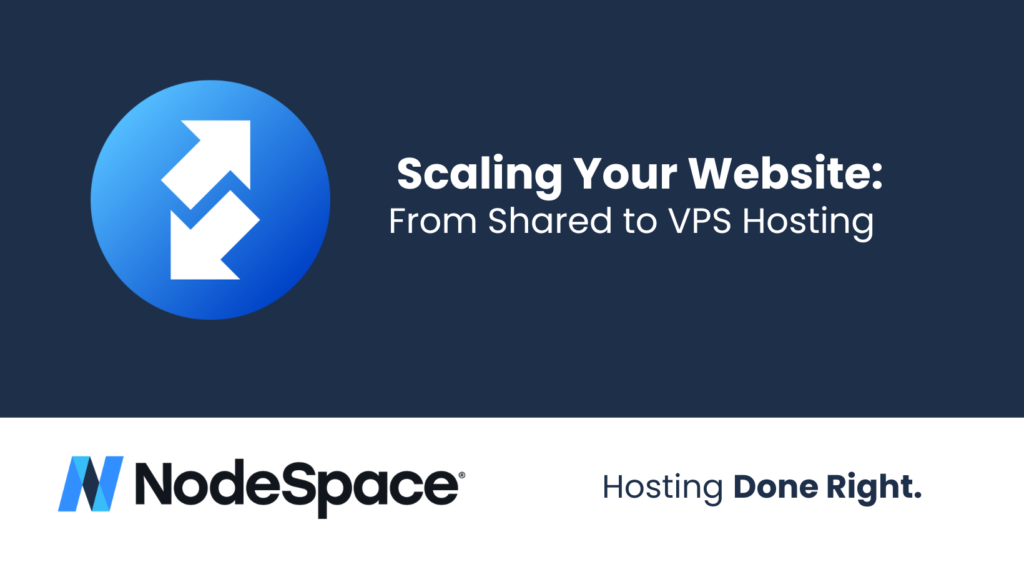Scaling a website to accommodate growing traffic and functionality is a critical milestone for online business owners. A website’s hosting infrastructure plays a pivotal role in its performance, scalability, and security. Initially, many websites begin their journey on shared hosting platforms due to cost efficiency and simplicity. However, as the site grows, there comes a time when transitioning to a more robust hosting solution becomes necessary. One of the most popular options is Virtual Private Server (VPS) hosting. In this blog post, we will discuss the reasons for making the switch from shared to VPS hosting and guide you through the process.
What is Shared Hosting?
Shared hosting is a type of hosting where multiple websites share the resources of a single server. It’s like living in an apartment building where you share utilities and amenities with your neighbors. Shared hosting is generally the cheapest hosting option available and is sufficient for small websites that don’t require much in terms of resources and performance.
Pros:
- Cost-effective
- Easy to use for beginners
- Usually includes cPanel or other user-friendly interfaces
Cons:
- Limited resources (CPU, RAM, bandwidth)
- Reduced control over server settings
- Lower levels of security
What is VPS Hosting?
Virtual Private Server (VPS) hosting offers a virtualized server environment where you get dedicated resources. Though multiple VPS instances share the same physical server, each has its own isolated environment. It’s like living in a condominium where you own your space and don’t have to share resources.
Pros:
- Dedicated resources
- Scalability
- Root access for more control
Cons:
- More expensive than shared hosting
- Requires a moderate level of technical skills
Why Make the Transition?
Improved Performance
As your website grows, you’ll notice slowdowns and even downtimes during traffic spikes if you are on a shared server. A VPS offers dedicated resources to mitigate this problem.
Enhanced Security
VPS hosting provides better security features and allows you to implement additional layers of protection, which is crucial for websites handling sensitive information.
Scalability
VPS hosting plans are generally more flexible and allow you to scale your resources as per your needs, ensuring that you’re only paying for what you use.
Greater Control
With VPS hosting, you usually get root access to the server, enabling you to install software and make configuration changes without going through the hosting provider.
Steps to Transition from Shared to VPS Hosting
- Assess Your Needs: Evaluate your website’s current performance, resource utilization, and future growth plans to determine the specifications for your VPS.
- Choose a VPS Plan: Based on your needs, select a VPS hosting plan that offers the necessary CPU, RAM, storage, and bandwidth.
- Backup Your Website: Before making any changes, make sure to back up your website to avoid data loss.
- Migrate Data: Most hosting providers offer migration services. If not, you might need to manually transfer your website files and databases to the new VPS.
- Configure Server Settings: Set up the software stack (like Apache, PHP, MySQL) on your VPS, and tweak the settings for optimization.
- Update DNS Records: Update your website’s DNS records to point to the new VPS server.
- Test the Website: Before going live, test the website thoroughly to ensure that all functionalities are working as expected.
- Monitor and Optimize: After going live, continually monitor your VPS to optimize performance.
We’re here to help
Transitioning from shared to VPS hosting is an inevitable step for a growing website. It offers better performance, security, and control over your web environment. While it requires a bit more technical expertise, the benefits certainly outweigh the costs and challenges. By following the steps outlined above, you can ensure a smooth transition and set your website up for success. If you’re not sure you’re up for the task, our technical team will handle the migration for you, quickly and seamlessly. Just let us know when you place your order.



